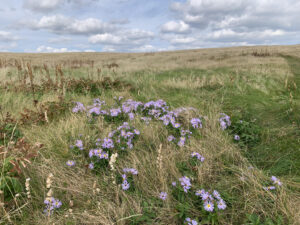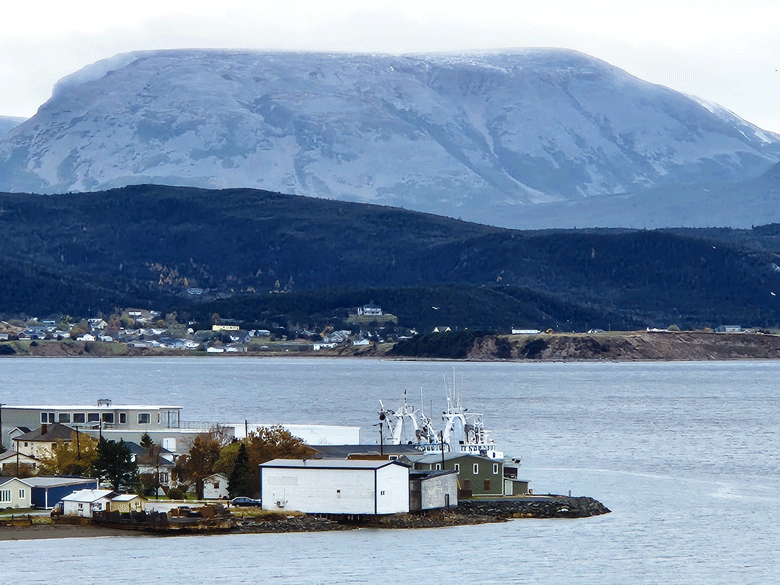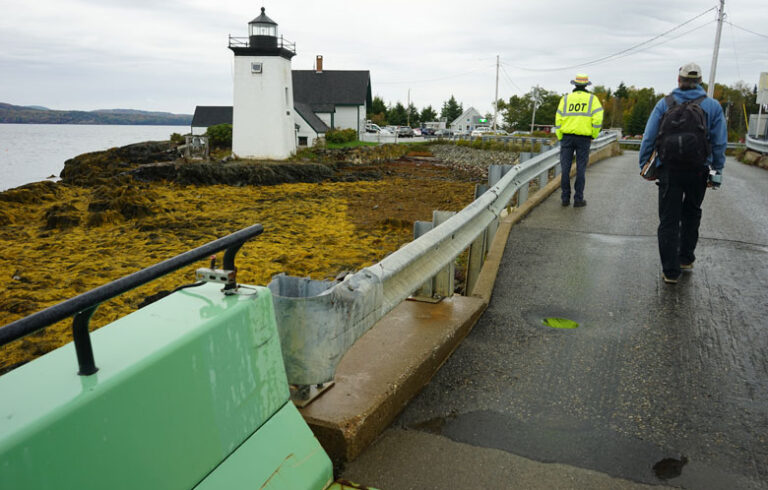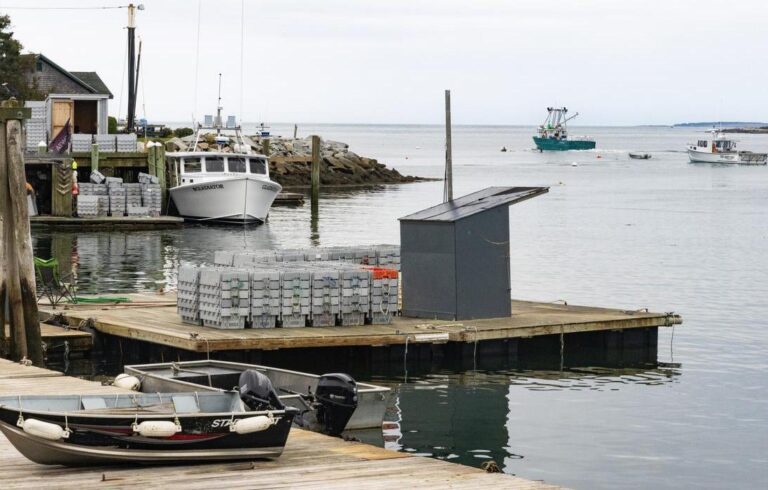I had heard that when you went to Newfoundland you felt as though you were in Maine in the 1970s. Since I remember that period vividly, I thought it might be fun to re-live my youth.
But when I got off the ferry in Channel-Port aux Basques, I realized that I had not walked back in history, but I had walked into a dream. The fantastical mountains kneel in the crashing surf and every vista seems to be right out of a Tolkien novel. Newfoundland isn’t, and never was, Maine.
In 1497, the European explorer John Cabot visited Newfoundland on behalf of England. He was looking for gold and spices but what he found was even more important to the hungry people of Europe—cod. The Grand Banks were
teeming with cod.
The fishing industry controlled the economy of Newfoundland and it was a boom or bust existence.
From the early 1500s on, French, English, Portuguese, and Basque fishers came to Newfoundland to change the fishing culture from subsistence fishing of the First People to a major export economy. For more than 400 years cod fishing was the mainstay of the Newfoundland economy.
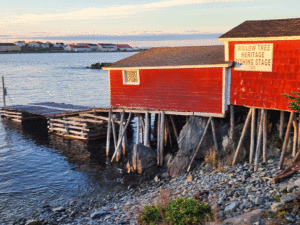
Well into the 20th century fish flakes (drying racks) lined the waterfront streets of St. John’s, bringing the reek of drying fish and clouds of flies. St. John’s hosted fishing fleets from around the world and the province’s small “outport” towns sent their catches to St. John’s for export.
Cod was king but the fluctuations in price and catch size made a precarious living for fishers. Gravel-filled glacial till soil and a short growing season discouraged commercial agriculture. Logging never assumed the importance
it did in the Maine woods. The fishing industry controlled the economy of Newfoundland and it was a boom or bust existence for thousands of hardy men and women.
Newfoundland was a dominion of Great Britain until 1949 when it joined Canada as part of the province of Newfoundland and Labrador. In the 19th century Newfoundland considered becoming part of the U.S. and had it done so it might have become more like Maine, but its long history of allegiance to Great Britain shaped the thinking and economy of Newfoundland.
In the mid-20th century two events changed everything: the election of Joseph “Joey” Smallwood as premier—serving from 1949 to 1972—and the collapse of the cod fisheries.
Smallwood was a visionary leader whose influence on the economy and culture of Newfoundland will be evident for a hundred years. He began the process that took a struggling colony to its present status as a stable Canadian province, but his long tenure as premier was not without challenges. Smallwood was an innovator who backed numerous attempts to diversify the Newfoundland economy, most of which failed. Cod remained the monocrop of the Newfoundland economy. Then, in 1951, factory fishing changed the cod industry.
In 1968 at the height of the factory fishing period, 810,000 tons of cod were taken.
In 1968, at the height of the factory fishing period, 810,000 tons of cod were taken in factory fishing by international fishing fleets. By the 1990s the cod fishery had collapsed and a moratorium on cod fishing was established by the federal government in Ottawa. Newfoundlanders are famously proud of their homeland but the changes in the cod industry increased out-migration, particularly to the U.S. The cod processing stations, called fishing premises, that once dotted the coastline were abandoned. The cod drying flakes were removed. Even today the harbors of Eastern Newfoundland are mostly empty.
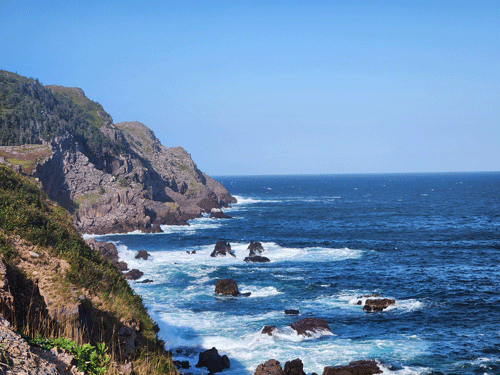
Fishing boats and pleasure boats are uncommon in the sparsely populated outport communities. This change is often tied to the statement reputed to have been made by Joey Smallwood, “Burn your boats,” when he was trying to encourage the transition from small-scale fishing to a more consolidated (and he believed) a more profitable factory model.
The boats are gone and so are many of the rural outports that were once an important part of Newfoundland’s heritage. Changes as radical as those of the Smallwood era are unimaginable in Maine.
In the period from the 1950s to the 1970s, Smallwood’s administration worked to bring Newfoundland up to the standards of Atlantic Canada and the U.S. One of the most significant attempts to create change was the closing of 200 communities and the resettlement of 28,000 people.
Today, many outports are merely summer colonies. Towns are consolidated. There is no sprawl. Newfoundlanders live within the confines of specific towns with vast empty spaces between settlements. Almost all commerce is located in major towns and within those towns segregated into shopping districts. In rural towns you don’t step out to the corner store because usually there is no store or even a corner.
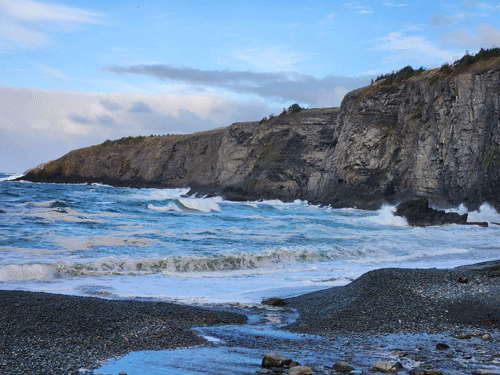
The outports are hollowed-out towns. Local schools, those that have not been consolidated, are serving fewer than a dozen children when there used to be hundreds. Parents commute to the major towns and local shopping is unavailable. Still, a love of place keeps residents clinging to the outports even in the face of dramatic changes.
Resettlement has been a challenge for Newfoundlanders but has brought benefits to visitors. In every community there are well maintained walking trails beside the ocean where you can see icebergs floating by from June through August and the crashing surf all year long. Like Maine, most beaches are rocky and the Newfoundland waves from the North Atlantic are perilously cold.
Today’s Newfoundland seems prosperous in comparison to Maine. There are no mobile homes and every house, every shed, and even every doghouse is clad in vinyl siding. In Newfoundland vinyl siding has gone to heaven.
Barns have been replaced by Quonset huts that were introduced during the World War II period and are remarkably common. A generous government and opportunities in the expanding alternative energy fields have brought
prosperity to the average Newfoundland family. Immigration from developing countries will shape the future of Newfoundland.
Downtown St. John’s combines past and present. On Water Street Celtic music from the Clancy Brothers and Irish Rovers billows out of the bars at all hours. Irish folk culture is more vibrant here than in Ireland. Kissing a cod fish in one of these bars allows you to become an honorary Newfoundlander. I skipped the cod but was embraced by a local family from an outport called Renews.
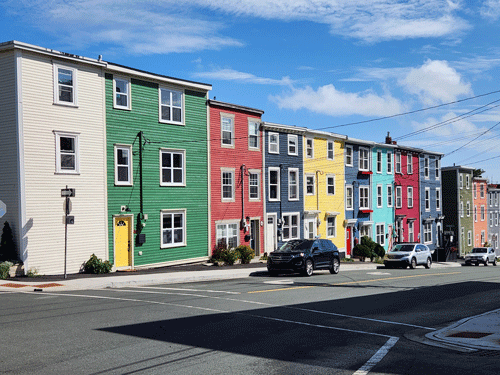
Music and storytelling venues dot the city of St. John’s even in the off season. Newfoundland Celtic music is nostalgic. It celebrates the love of place even more than romantic love. It is also seductive and makes you fall in love with Newfoundland itself. Everyone in Newfoundland knows the Ron Hynes song, “Sonny’s Dream.” If you don’t learn the words the first time, don’t worry, you will hear it hundreds of times more.
The Rooms is a locus of art and culture for Newfoundland and Labrador. Part museum, part archives, part performance space, it is at the center and heart of St. John’s. The past never dies in Newfoundland and the exhibit at the Rooms about World War I brought me to tears. After two hours of viewing, I mourned for families I had never known.
Memorial University is just a short hop from downtown St. John’s and lends an international air to the city. New Canadians from across the world mingle with students whose heritage in Newfoundland and Labrador goes back for centuries. The new Canadians bring youth and vitality to St. John’s and the hope that they will choose to make Newfoundland their permanent home. The folklore department at Memorial University is considered one of the best in the world. Its influence has renewed interest in mummering, a Christmas tradition that was brought to Newfoundland from Ireland generations ago.
Maine and Newfoundland share a maritime past based on fisheries and the desire for new opportunities. Astute Mainers won’t look to Newfoundland as a nostalgic trip to the 1970s but will see the potential for a joint future of economic and social revitalization.
Patricia Estabrook lives in Belfast.
